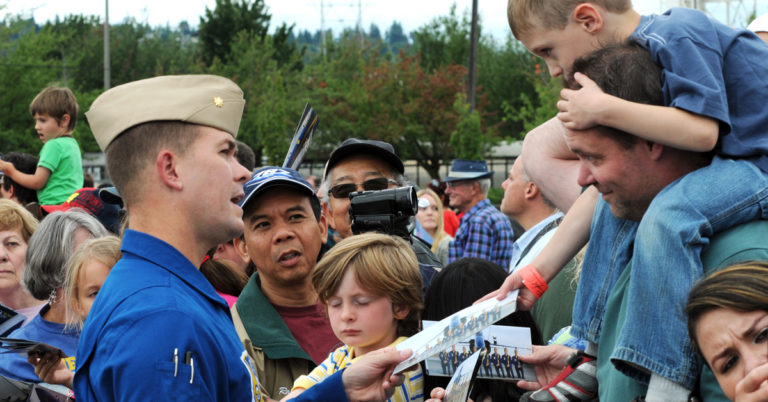Eagle Scout performs with Blue Angels

 Navy Cmdr. Frank Weisser, an Eagle Scout, will rejoin the Blue Angels as a solo pilot.
Navy Cmdr. Frank Weisser, an Eagle Scout, will rejoin the Blue Angels as a solo pilot.
He’ll perform with the U.S. Navy’s flight demonstration squadron as Blue Angel No. 6 — known as the “opposing solo pilot” — for the remainder of the 2016-2017 season.
Weisser replaces Marine Capt. Jeff Kuss, who died in a crash at an airshow in Smyrna, Tenn., in June.
Weisser is no stranger to the Blue Angels. He has served as “narrator, key influencer and VIP pilot, opposing solo, and lead solo,” according to a news release from the U.S. Navy. He’s a 2000 graduate of the U.S. Naval Academy and has accumulated more than 4,000 flight hours in his career.
The Blue Angels have been wowing crowds since 1946, meaning 2016 marks the squadron’s 70th anniversary. They have performed for more than 484 million fans in that span.
During shows, flying at speeds up to 700 mph, the six demonstration pilots maneuver their jets within 18 inches of one another.
Details of Weisser’s story are featured in the book Fly Navy, written by fellow Eagle Scout Alvin Townley.
Eagles’ Call magazine (then called Eagle Scout Magazine) published an excerpt from Fly Navy in its Spring 2011 issue.
Here’s an excerpt of the excerpt:
The exacting precision their brand of teamwork demands binds the members of the Blue Angels squadron together like few others and kindles a level of trust rare in any organization.
“I’ve heard it called ‘high trust,’” said Blue Angel No. 5 Frank Weisser after his morning flight. “It’s an exceptional amount of trust that I hadn’t seen before I came here.
“For us, there are a lot of points throughout the show where No. 6 is trusting that when we come in for our opposing crosses, I’m going to be on the right line, at the exact right altitude. He’s not looking at the ground; he’s only looking at me. And I’m trusting that he’ll maneuver his aircraft with the exact same pull and roll rate, and then set his wings at the same place on the horizon every time. I know he’s going to get as close as he can without hitting me.”
When the Blues fly in formation, they base their movements off the leader — one plane always leads and others will always follow. The lead plane must maintain course and speed and also keep the route safe for the others. The pilots following him have one basic job: not to check their instruments or horizon and trust the lead pilot.
“When you’re as low and as close as we are together,” Frank explained, “if you look away even for a quarter of a second to check your speed or altitude you’re already out of position and maybe dangerously so. You don’t even have to move your head. Sometimes my head is looking one place and I just move my eyes—that’ll be too much time because when you’re flying that close, you can’t bring your eyes inside to check anything.”
Imagine six planes all 18 inches from one another. Imagine them turning together at more than 300 or 400 miles per hour then descending toward the ground. Only the lead pilot watches the ground to maintain the safety and heading of the formation. The other five pilots watch only their reference points on the aircraft next to them. They feel the entire group plummeting toward the ground at ever-faster speeds; they know the runways, trees, and lakes below are growing ever closer, ever closer. But they can’t look. They have to focus on their wingman. They have to trust No. 1.
